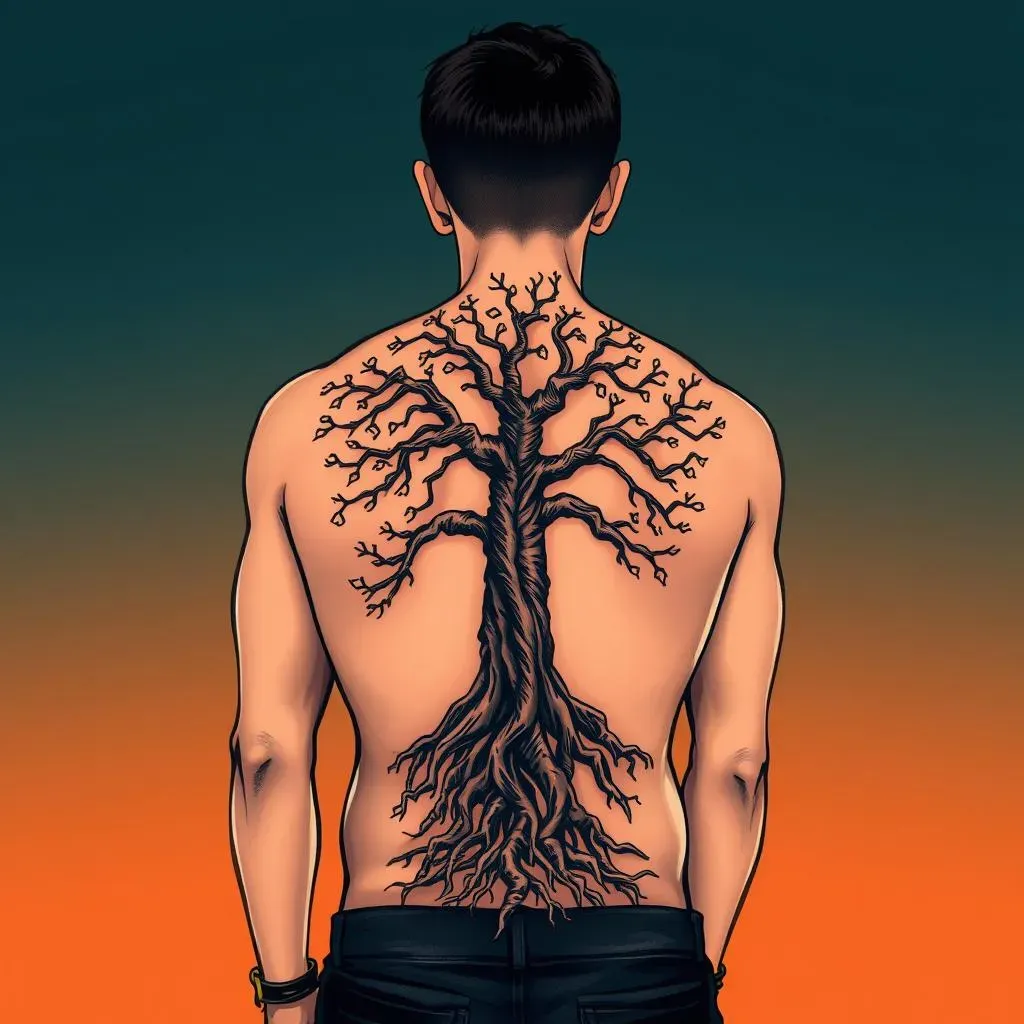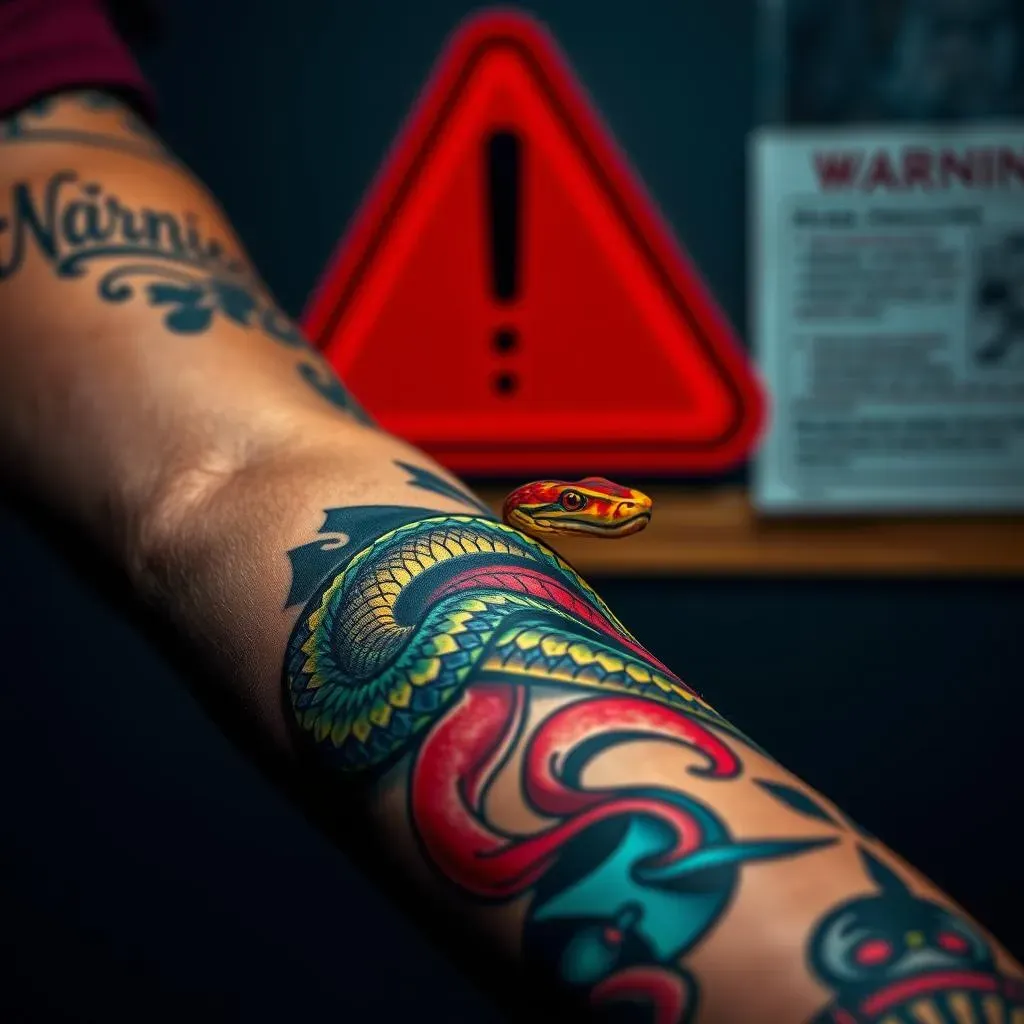Table of Contents
Ever wondered when tattoos started and how they became such a global phenomenon? Tattoos, those permanent works of art etched onto skin, have a history as rich and diverse as the cultures that embrace them. From ancient rituals to modern self-expression, the story of tattoos spans millennia and continents. This article delves into the captivating origins of when tattoos started, tracing their presence in various civilizations and exploring the meanings they held. We'll journey from the frozen skin of ancient mummies to the vibrant artistry of Polynesian cultures, uncovering the tools, techniques, and traditions that shaped the world of tattooing. Prepare to discover the cultural significance, health implications, and evolving perceptions surrounding this ancient practice. Whether you're a tattoo enthusiast, a history buff, or simply curious about body art, this exploration into the history of tattoos promises to be an enlightening and engaging read.
What is a Tattoo and Its Significance?
What is a Tattoo and Its Significance?
Defining the Art Form
At its core, a tattoo is a form of body modification. It's created by inserting ink, dyes, and pigments into the dermis layer of the skin to form a design. Think of it as a permanent painting on your body, a way to express yourself, your beliefs, or simply to adorn yourself with art that resonates with you. The process involves breaking the skin with a needle and depositing the ink, which then becomes encapsulated by skin cells, making the design visible through the epidermis. This is what ensures the tattoo's permanence, setting it apart from temporary forms of body art.
But a tattoo is more than just ink on skin. It's a statement. It can be a symbol of remembrance, a badge of honor, a declaration of love, or a reflection of one's identity. The possibilities are endless, and the meaning is deeply personal to the individual wearing it. The design, placement, and style all contribute to the tattoo's overall significance, making each piece a unique and meaningful expression.
Beyond Aesthetics: The Cultural Significance of Tattoos
Tattoos aren't just a modern trend; they've been around for thousands of years, serving various purposes in different cultures. In some societies, tattoos were used to mark status, lineage, or tribal affiliation. They could signify rites of passage, spiritual beliefs, or even medicinal practices. For example, ancient Polynesian cultures used intricate tattoos to denote social rank and achievements, while in some indigenous communities, tattoos were believed to have protective or healing properties.
Even today, tattoos carry cultural and symbolic weight. They can be a way to connect with one's heritage, honor ancestors, or express solidarity with a particular group or movement. The choice of imagery, the style of tattooing, and the location on the body can all contribute to the cultural meaning of a tattoo, making it a powerful form of communication and self-expression that transcends mere aesthetics.
The History of Tattoos: When Did Tattooing Begin?
The History of Tattoos: When Did Tattooing Begin?
Ancient Ink: Tracing the Earliest Evidence
The quest to pinpoint precisely when tattoos started leads us back thousands of years. The oldest direct evidence comes from Ötzi the Iceman, whose mummified body, discovered in the Alps, bears 61 tattoos dating back to between 3370 and 3100 BC. These weren't elaborate designs, but rather simple lines and dots, likely created for therapeutic purposes, similar to acupuncture. Ötzi's tattoos offer a fascinating glimpse into the ancient world, suggesting that tattooing was practiced far earlier than previously thought.
Beyond Ötzi, archaeological finds from around the globe reveal the widespread practice of tattooing in ancient times. Mummies from Egypt, dating back to around 2000 BC, also display tattoo art. These early examples demonstrate that tattooing wasn't confined to a single region or culture but was a widespread practice with roots stretching deep into human history. The motivations behind these early tattoos likely varied, ranging from medicinal to spiritual to simply decorative.
Global Traditions: Tattooing Across Cultures
While Ötzi and the Egyptian mummies provide the earliest evidence, the history of tattoos unfolds across diverse cultures and continents. In Japan, elaborate tattoos known as Irezumi have been practiced for centuries, evolving from simple markings for criminals to intricate works of art associated with the Yakuza. Polynesian cultures, particularly in Samoa, developed complex tattooing traditions called Tatau, which were deeply intertwined with social status, genealogy, and spiritual beliefs. These tattoos were not merely decorative; they were integral to the individual's identity and their place within the community.
From the Scythians of ancient Siberia, who adorned their bodies with animal motifs, to the indigenous tribes of the Americas, who used tattoos for ritualistic and medicinal purposes, the history of tattoos is a tapestry woven from diverse cultural threads. Each culture brought its own unique techniques, designs, and meanings to the practice, shaping the evolution of tattooing into the global phenomenon we know today. It's a testament to the enduring human desire to express ourselves, connect with our heritage, and adorn our bodies with art that tells a story.
Culture | Tattoo Style | Significance |
|---|---|---|
Ancient Egypt | Simple geometric patterns | Possibly medicinal or religious |
Polynesia | Intricate geometric designs | Social status, genealogy, spiritual beliefs |
Japan | Irezumi (elaborate full-body tattoos) | Originally for criminals, later associated with the Yakuza |
Cultural Significance and Associations of Early Tattoos
Cultural Significance and Associations of Early Tattoos
Marking Identity: Tattoos as Social Signifiers
Early tattoos were far more than mere decoration; they were powerful social signifiers, deeply intertwined with identity and community. In many cultures, tattoos served as visual markers of status, lineage, or group affiliation. Imagine a society where your skin literally told your story – your achievements, your family history, your role within the tribe. That's precisely what tattoos accomplished in many ancient communities. They were a form of non-verbal communication, instantly conveying information about an individual's place in the social hierarchy. For instance, in some Polynesian societies, the complexity and extent of a person's tattoos directly reflected their rank and accomplishments. The more elaborate the tattoo, the higher their standing within the community.
The placement of tattoos was also significant. Specific locations on the body might be reserved for certain groups or achievements, adding another layer of meaning to the overall design. These traditions highlight the importance of understanding the cultural context in which tattoos were created and worn. Without that understanding, we risk misinterpreting their true significance and reducing them to mere aesthetic adornments. The reality is that early tattoos were integral to the social fabric of many societies, shaping how individuals were perceived and how they interacted with one another.
Spiritual Connections: Tattoos and Ritual Practices
Beyond their social function, early tattoos often held deep spiritual significance, playing a crucial role in ritual practices and religious beliefs. Many cultures believed that tattoos could provide protection from evil spirits, enhance fertility, or facilitate communication with the divine. The act of tattooing itself could be a sacred ritual, performed by priests or shamans, with specific designs and techniques reserved for these ceremonies. The ink used might be derived from natural sources, imbued with symbolic properties, further enhancing the tattoo's spiritual power.
Consider the ancient Egyptians, who used tattoos to honor their gods and goddesses. The goddess Bes, protector of childbirth and the home, was a popular subject for tattoos, believed to offer protection to women during pregnancy and labor. Similarly, in some indigenous cultures, tattoos were used in healing rituals, with specific designs applied to alleviate pain or ward off illness. These examples underscore the profound connection between tattoos and spirituality in the ancient world, demonstrating how body art could serve as a conduit to the supernatural and a means of seeking divine favor. The spiritual aspect adds a dimension of respect to the ancient art of tattoos.
Culture | Tattoo Purpose | Example |
|---|---|---|
Polynesia | Social Status/Genealogy | Intricate patterns denoting rank and lineage |
Ancient Egypt | Protection/Religious | Tattoos of Bes for childbirth protection |
Indigenous Tribes | Healing/Ritualistic | Specific designs for pain relief or warding off illness |
The Tattoo Process Through the Ages: From Ancient Tools to Modern Techniques
The Tattoo Process Through the Ages: From Ancient Tools to Modern Techniques
The Dawn of Ink: Primitive Tattooing Methods
Imagine tattooing without electricity, without sterilized needles, without even a clear understanding of hygiene. That's the reality of the tattoo process in ancient times. The earliest methods were rudimentary, often involving sharp objects like thorns, bones, or obsidian to puncture the skin. Ink was created from natural pigments – soot, plant dyes, minerals – and rubbed into the wounds. Ötzi the Iceman's tattoos, for example, were likely created using soot rubbed into incisions made with a sharp tool. The process was undoubtedly painful and carried significant risks of infection, but the cultural importance of the tattoos outweighed these concerns for many.
Different cultures developed their own unique techniques. In Polynesia, tattooing was a sacred art performed with hand-tapped tools made from bone, turtle shell, and wood. The process was slow, meticulous, and deeply symbolic, often taking days or even weeks to complete a single tattoo. These methods, though primitive by modern standards, demonstrate remarkable ingenuity and a deep understanding of the human body.
Evolution of Tools: From Hand-Tapped to Machines
The invention of the electric tattoo machine in the late 19th century revolutionized the tattoo process. Inspired by the electric engraver, Samuel O'Reilly's machine made tattooing faster, more precise, and arguably less painful. This innovation opened up new possibilities for tattoo designs and allowed artists to create more intricate and detailed work. The electric tattoo machine quickly gained popularity, transforming tattooing from a niche practice to a more accessible and widespread form of body art.
However, hand-tapped methods never completely disappeared. In many cultures, they continue to be practiced alongside modern techniques, preserving traditional skills and maintaining a connection to ancestral practices. These traditional methods are often seen as more authentic and spiritually significant, offering a unique tattooing experience that honors the past.
Era | Tool | Technique |
|---|---|---|
Ancient Times | Thorns, bones, obsidian | Hand-poked or cut |
Polynesia | Hand-tapped tools (bone, shell, wood) | Tapping ink into the skin |
Late 19th Century | Electric tattoo machine | Rapid needle insertion |
Modern Tattooing: Precision and Safety
Today, the tattoo process is characterized by advanced technology, strict hygiene standards, and a vast array of inks and designs. Modern tattoo machines are highly refined, allowing artists to control the depth, speed, and pressure of the needle with incredible precision. Single-use needles and rigorous sterilization protocols have significantly reduced the risk of infection, making tattooing a much safer practice than in the past.
The availability of a wide range of inks, from traditional black to vibrant colors and even glow-in-the-dark pigments, has expanded the artistic possibilities of tattooing. Artists can now create stunningly realistic portraits, intricate geometric patterns, and bold, graphic designs. The modern tattoo studio is a far cry from the backroom parlors of the past, offering a professional and sterile environment where clients can express themselves through body art with confidence and safety.
Tattoos Today: Health Risks, Removal, and Modern Interpretations
Tattoos Today: Health Risks, Removal, and Modern Interpretations
Navigating the Risks: Health Considerations in Modern Tattooing
While modern tattooing is significantly safer than in the past, it's crucial to be aware of the potential health risks. Infection remains a primary concern, especially if proper sterilization techniques aren't followed. That's why choosing a reputable tattoo artist who adheres to strict hygiene standards is paramount. Allergic reactions to tattoo inks can also occur, particularly with certain colors. Red inks, for example, are known to cause allergic reactions in some individuals. It's essential to discuss any known allergies with your artist beforehand and to be aware of the ingredients in the inks being used.
Beyond infections and allergies, there's also a risk of blood-borne diseases if unsterilized equipment is used. Hepatitis B and C, as well as HIV, can be transmitted through contaminated needles. Again, this underscores the importance of choosing a licensed and reputable tattoo artist who prioritizes safety and hygiene. Reputable shops will use autoclaves to sterilize equipment and will always use single-use needles. It's also important to follow the aftercare instructions provided by your artist to minimize the risk of complications.
Erasing the Past: Tattoo Removal Options and Their Effectiveness
What happens when a tattoo no longer reflects who you are? Fortunately, tattoo removal is possible, although it's not always a simple or painless process. Laser tattoo removal is the most common and effective method, using concentrated light beams to break down the tattoo ink into smaller particles that the body can then eliminate. The number of sessions required depends on the size, color, and age of the tattoo, as well as the individual's skin type. Darker inks, like black and blue, are generally easier to remove than lighter colors, such as green and yellow.
Other tattoo removal options include surgical excision, which involves cutting out the tattooed skin and stitching the remaining skin together. This method is typically used for smaller tattoos and can leave a scar. Dermabrasion, another option, involves sanding down the skin to remove the tattoo, but it can also be painful and leave scarring. Tattoo removal creams are also available, but their effectiveness is limited, and they can cause skin irritation. Ultimately, the best tattoo removal method depends on individual factors and should be discussed with a qualified dermatologist or tattoo removal specialist. It's also important to be aware that complete tattoo removal isn't always possible, and some ghosting or scarring may remain.
Removal Method | Description | Effectiveness | Potential Side Effects |
|---|---|---|---|
Laser Removal | Breaks down ink with light beams | High | Blistering, scarring, skin discoloration |
Surgical Excision | Cutting out tattooed skin | High (for small tattoos) | Scarring |
Dermabrasion | Sanding down the skin | Variable | Pain, scarring, skin discoloration |
The Enduring Mark: Reflecting on the History of Tattoos
From their ancient origins as symbols of status, spirituality, and identity, tattoos have journeyed through time, adapting to changing cultures and technologies. Understanding when tattoos started and how they've evolved provides a fascinating glimpse into the human story. Whether viewed as art, rebellion, or personal expression, tattoos continue to hold a powerful place in our world, marking our bodies and reflecting our ever-evolving identities. As techniques advance and perceptions shift, the story of tattoos is far from over, promising an intriguing future for this ancient and enduring art form.